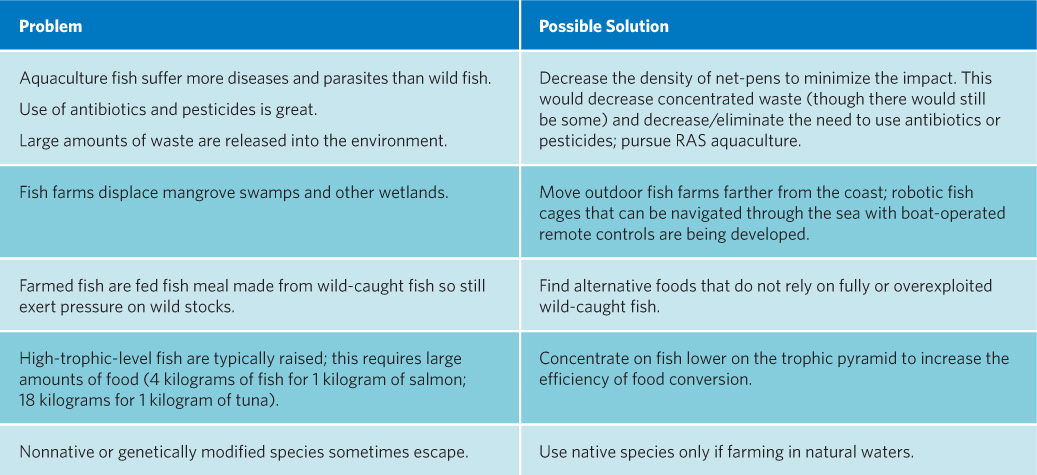Aquaculture presents environmental challenges.
Once scientists could get marine fish to reliably breed in captivity, entrepreneurs began adapting the aquaculture techniques used in freshwater operations to suit larger ocean fish. Before long, elaborate net-pen operations began dotting coastlines around the world. This simple technology has enabled fish farms to out-produce traditional fishers. In 2009, aquaculture crossed the threshold of providing more than half of all seafood consumed worldwide, with Asia leading the way, and China alone producing some 63% of all farmed fish.
But aquaculture has also led to a range of environmental problems, including depletion of the populations of smaller fish harvested as food for aquaculture species and ecosystem damage from the aquaculture ponds and net-pens. For example, hundreds of thousands of acres of tropical mangrove forests have been cleared to make way for shrimp aquaculture ponds. Mangrove trees are an important keystone species that provides habitat and protection for a wide variety of species, including humans, as they protect the coastline from storm surges during hurricanes. Another problem is transfer of diseases and parasites from farmed to wild populations. In British Columbia, one study showed that farmed salmon spread sea lice to wild populations, causing up to 80% juvenile mortality.
One of the biggest drawbacks may be the use of wild-caught fish as food for farmed fish. Even as aquaculture grows, reducing the need to capture wild fish for consumption, it is increasing the need for the capture of wild fish slated to be processed into fishmeal for aquaculture operations. Most experts agree that these problems are not insurmountable. But how best to resolve them is a matter of some debate. TABLE 31.1
NET-PEN AND POND AQUACULTURE: PROBLEMS AND POSSIBLE SOLUTIONS


How can aquaculture actually increase the fishing pressure on wild stocks?
If high-trophic level fish are raised in aquaculture, fishing might increase to catch the prey fish these pond or pen raised fish need to eat.
KEY CONCEPT 31.6
Pond and net-pen aquaculture raises large amounts of fish but generates pollution, damages coastal habitats, and threatens wild stocks via escape of nonnative fish or from harvesting wild fish as food for cultured fish.
Meanwhile, RAS technology offers its own mix of risks and benefits. “We have to make a distinction between having an impact and being sustainable,” says Lorenzo Juarez, deputy manager of the National Oceanic and Atmospheric Administration’s (NOAA’s) Aquaculture Program. “Anything you do is going to have an impact on the environment. The real question is whether it’s an impact the environment can absorb and recover from or one that will do permanent damage.”
31-15